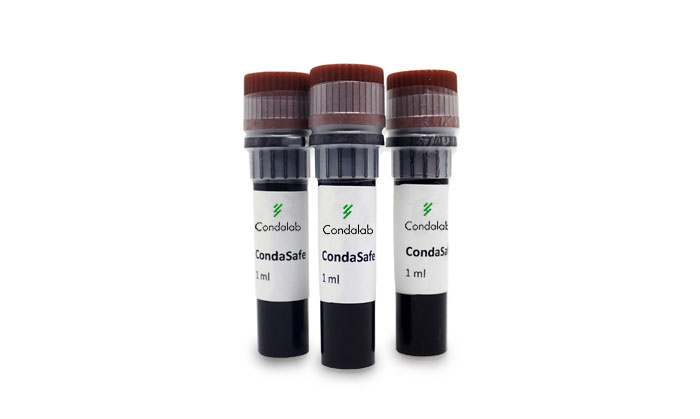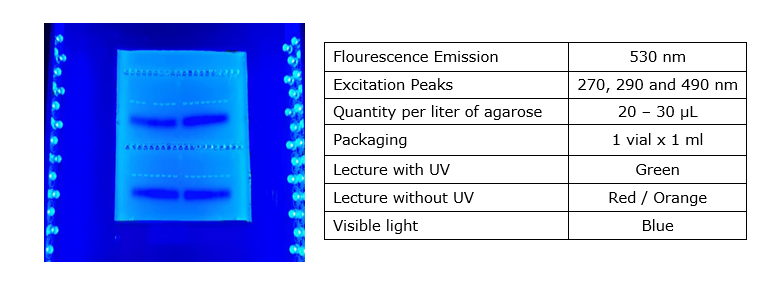Published: 25/06/19 08:49 Categories: Microbiology
History of a technique
Electrophoresis is a technique widely used in many molecular biology, genetics and biochemistry laboratories around the world. Once completed, it is necessary to highlight the distance traveled by the different molecules and identify them. To do so, specific dyes are used that show affinity for DNA, RNA or other molecules of biological origin.
One of the most widely used dyes so far has been ethidium bromide, mainly due to its affinity for this type of molecule and to its fluorescent properties when exposed to UV light. However, this product has many disadvantages, since it is a toxic and mutagenic product that puts technicians who work daily with this type of techniques at risk.
We guarantee safety in the laboratory
In order to avoid these risks, at Condalab have launched our own alternative product: Pronasafe. Following the same line, we have completed our range of products with the CondaSafe (CAT. 4687) dye, whose features and performance have been improved.

Features
- Used for detecting dsDNA and RNA
- Non-toxic, non-mutagenic and non-carcinogenic
- High sensitivity even for small fragments
- Superior signal-to-noise ratio
- Convenient ready-to-us
- Compatible with a wide variety of gel reading instruments
- No hazardous waste
Product Specifications

Do not hesitate to ask for more information to your commercial or contact us.

 Food fraud: How do we detect it?
Food fraud: How do we detect it?
 Visit Us at MEDICA 2025 – Discover Our Precise Detection Solutions
Visit Us at MEDICA 2025 – Discover Our Precise Detection Solutions
 PCR: The Technique Revolutionizing Rapid Detection in the Food Industry
PCR: The Technique Revolutionizing Rapid Detection in the Food Industry
 How Culture Media Ensure the Safety, Efficacy, and Quality of Medicines
How Culture Media Ensure the Safety, Efficacy, and Quality of Medicines
 Meeting us at MEDLAB MIDDLE EAST 2025
Meeting us at MEDLAB MIDDLE EAST 2025